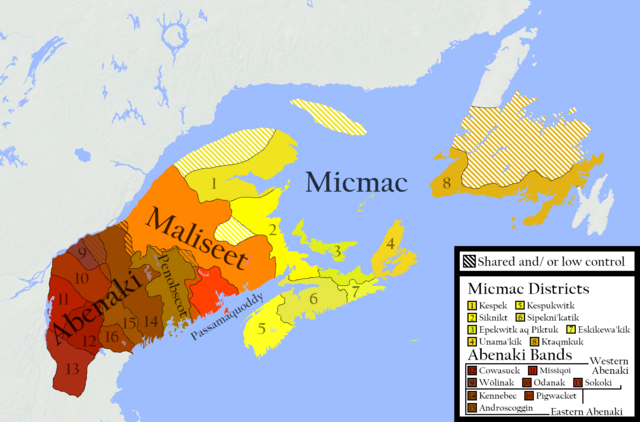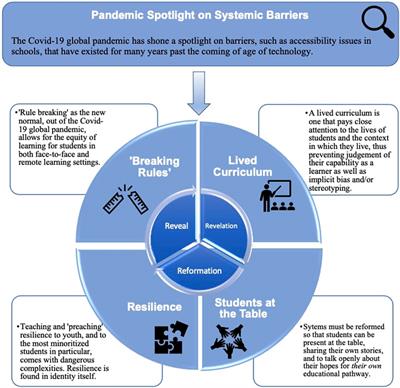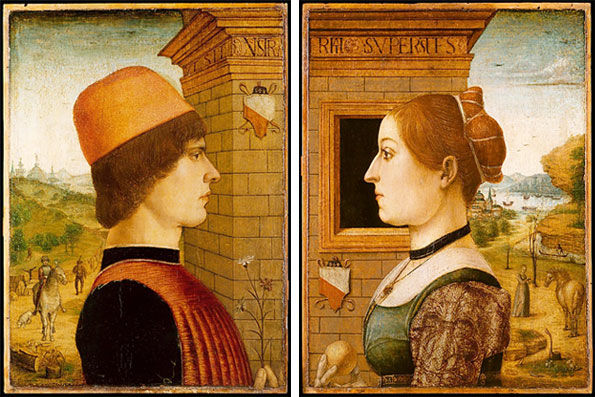Introduction
Nestled in the northeastern corner of the United States, Maine boasts a rich and diverse cultural tapestry. At the heart of this tapestry lies the enduring legacy of its Indigenous peoples. In this article, we delve into the history, culture, and contemporary life of Maine’s Indigenous communities, shedding light on their invaluable contributions to the state’s identity.
Nestled in the northeastern corner of the United States, Maine’s allure extends far beyond its breathtaking natural beauty. Within this northeastern gem lies a rich and diverse cultural tapestry, and at the very heart of this intricate weave rests the enduring legacy of its Indigenous peoples. In this article, we embark on a journey to delve deep into the history, culture, and contemporary life of Maine’s Indigenous communities, shedding light on their invaluable contributions to the state’s identity.
A Rich Tapestry of Indigenous Heritage: Maine’s Indigenous history is ancient and storied. Long before European settlers arrived, the region was inhabited by several distinct Indigenous groups, including the Abenaki, Penobscot, Passamaquoddy, Maliseet, Micmac, and others. These communities developed intricate societies deeply connected to the land, subsisting on hunting, fishing, and farming. Their spiritual practices, oral traditions, and artistic expressions wove a vibrant cultural tapestry that still resonates today.
Challenges and Resilience: The history of Maine’s Indigenous peoples also includes periods of profound challenge and adversity. European colonization brought disease, displacement, and conflict that profoundly impacted these communities. Despite these hardships, Maine’s Indigenous peoples demonstrated remarkable resilience, preserving their languages, customs, and traditions against all odds.
Cultural Revival and Renewal: In recent decades, there has been a resurgence of interest in Indigenous culture and heritage, both within and beyond Indigenous communities. Efforts to revitalize traditional languages, practices, and artistic expressions have taken root, fostering a reconnection with ancestral knowledge. Powwows, storytelling, and cultural events provide opportunities for the wider community to learn about and celebrate Indigenous traditions.
Contributions to Maine’s Identity: Maine’s Indigenous communities have made enduring contributions to the state’s identity. Their deep connection to the land has shaped Maine’s relationship with its natural resources, emphasizing sustainable practices that respect the environment. Indigenous artistry, from intricate beadwork to storytelling, is celebrated as an integral part of the state’s cultural heritage.
Contemporary Life and Challenges: Today, Maine’s Indigenous communities continue to face unique challenges, including issues related to land rights, access to education, healthcare disparities, and the preservation of cultural heritage. Yet, they remain an essential part of the state’s cultural and social fabric, contributing to the diversity and vitality of Maine.
Honoring the Past and Building the Future: As Maine acknowledges its Indigenous heritage, there is an increasing commitment to fostering understanding, respect, and partnership with Indigenous communities. Collaborative initiatives aim to address historical injustices, strengthen cultural preservation efforts, and promote economic opportunities that empower Indigenous peoples.
In conclusion, Maine’s Indigenous communities are not relics of the past; they are vibrant, resilient, and integral to the state’s identity. Exploring their history, culture, and contemporary life provides a deeper understanding of the rich tapestry that makes Maine the unique and diverse place it is today. It is a testament to the enduring spirit of Maine’s Indigenous peoples and their invaluable contributions to the state’s past, present, and future.
Looking for more insights? You’ll find them right here in our extended coverage: Prehistoric Archaeology | Maine Historic Preservation Commission
Maine is home to several Indigenous groups, collectively known as the Wabanaki Confederacy. This alliance consists of the Mi’kmaq, Maliseet, Passamaquoddy, Penobscot, and Abenaki nations. For thousands of years, these communities have thrived in the region, their roots deeply intertwined with the land and waters that surround them.
Maine’s rich tapestry of history is intricately woven with the stories and traditions of the Indigenous communities that have called this land home for millennia. The Wabanaki Confederacy, a union of the Mi’kmaq, Maliseet, Passamaquoddy, Penobscot, and Abenaki nations, stands as a testament to the enduring presence of these Indigenous groups in the region.
For thousands of years, these communities have thrived in the vast and diverse landscapes of Maine, forging deep connections with the land, rivers, lakes, and the bountiful seas that sustain them. Their existence is a living testament to their resilience, adaptability, and profound understanding of the natural world.
The Wabanaki Confederacy’s collective wisdom and knowledge are rooted in their intimate relationship with the environment. They have passed down oral traditions, cultural practices, and ecological wisdom through generations, contributing significantly to the conservation and stewardship of the land. Traditional activities such as fishing, hunting, and harvesting have not only sustained these communities but also played a crucial role in maintaining the ecological balance of Maine’s ecosystems.
These Indigenous nations have also left a lasting legacy in the form of place names that resonate with the region’s deep history. Rivers, mountains, and landscapes bear names that reflect the Wabanaki languages, serving as a reminder of the enduring presence of these communities and their deep-rooted connection to the land.
While history carries its share of hardships, including the displacement and challenges faced by Indigenous peoples, there is also a spirit of resilience and cultural revival. Today, the Wabanaki Confederacy continues to celebrate their heritage through art, music, dance, and storytelling, sharing their vibrant cultures with the wider community.
Efforts to recognize and honor the contributions of Maine’s Indigenous peoples have grown stronger in recent years, with initiatives to promote cultural awareness, education, and collaboration. Museums and cultural centers showcase the rich heritage of the Wabanaki Confederacy, allowing visitors to learn and appreciate the significance of their presence in Maine.
In essence, Maine’s Indigenous communities, as represented by the Wabanaki Confederacy, serve as the guardians of a cultural and ecological legacy that spans millennia. Their stories and traditions enrich the state’s heritage and offer valuable insights into a harmonious relationship with the land and waters that sustain us all. As Maine continues to evolve, these communities remain an integral part of the state’s identity, ensuring that their history and contributions are recognized, celebrated, and preserved for generations to come.
You can also read more about this here: Wabanaki Heritage, Culture & Craft – Acadia National Park (U.S. …

The history of Maine’s Indigenous peoples is one of resilience and adaptation. Long before European settlers arrived, they developed complex societies, engaged in trade, and cultivated the land. Their profound connection to the natural world is reflected in their spiritual practices, storytelling, and artwork.
nullShould you desire more in-depth information, it’s available for your perusal on this page: TESTIMONY OF Stephen Bromage, Executive Director Maine …
The arrival of European colonists brought profound challenges, including displacement, disease, and cultural upheaval. Despite these hardships, Maine’s Indigenous communities have persevered, retaining their traditions and fighting for their rights. Land and water rights, tribal sovereignty, and cultural preservation remain central issues today.
The arrival of European colonists on the shores of what is now Maine marked a pivotal moment in the history of Indigenous communities in the region. It brought not only contact with new cultures but also profound challenges that continue to shape the experiences of these communities to this day.
One of the most devastating challenges was the impact of diseases introduced by the Europeans. Diseases such as smallpox, influenza, and measles had a devastating effect on Indigenous populations, leading to significant loss of life and causing widespread disruption within these tightly-knit communities. Despite the immense suffering, Indigenous resilience and adaptability allowed them to persevere, fostering new ways to cope with these catastrophic events.
Displacement was another major challenge faced by Maine’s Indigenous communities. As European settlers expanded their territories, Indigenous peoples were often pushed off their ancestral lands, leading to the loss of not only their homes but also their traditional ways of life. Forced relocations and the disruption of hunting, gathering, and fishing practices had profound cultural and economic implications.
However, Maine’s Indigenous communities have shown remarkable strength in the face of adversity. They have worked tirelessly to retain their traditions, languages, and cultural practices, passing down their heritage through generations. Cultural preservation efforts, such as language revitalization programs and the sharing of traditional knowledge, play a vital role in ensuring that the rich tapestry of Indigenous culture continues to thrive.
Land and water rights, as well as tribal sovereignty, have emerged as central issues for Maine’s Indigenous communities in modern times. These issues are intrinsically linked to the struggles of the past, as they revolve around reclaiming control over ancestral lands and resources. Indigenous nations have asserted their rights to manage and protect their natural environments, which is not only essential for cultural preservation but also for their economic well-being.
The fight for recognition and sovereignty has led to significant legal battles and policy advocacy. Indigenous leaders and activists have worked tirelessly to assert their rightful place in shaping the future of their communities. Collaborative efforts between Indigenous nations, state governments, and federal agencies have played a crucial role in addressing these issues, fostering understanding, and working toward reconciliation.
Today, the challenges faced by Maine’s Indigenous communities are far from over, but their resilience and determination remain unwavering. They continue to stand up for their rights, advocate for their cultural preservation, and contribute to the diverse tapestry of Maine’s social and political landscape. The history of Maine’s Indigenous communities is a testament to their enduring spirit and their commitment to preserving their heritage for future generations.
Explore this link for a more extensive examination of the topic: SAMHSA’s Concept of Trauma and Guidance for a Trauma-Informed …

Maine’s Indigenous cultures are rich and multifaceted. Traditional dances, storytelling, and art are vibrant parts of community life. Beadwork, basketry, and quillwork are celebrated artistic traditions, each piece telling a unique story and reflecting the beauty of the natural world.
Maine’s Indigenous cultures are a tapestry of rich and multifaceted traditions that have thrived for centuries. These communities, including the Wabanaki tribes such as the Passamaquoddy, Penobscot, Maliseet, and Micmac, have preserved their heritage with resilience, and their cultural expressions continue to play a significant role in community life.
Traditional dances are a vibrant and integral part of Indigenous culture in Maine. These dances often serve as a way to connect with the past, honor ancestors, and celebrate the natural world. They are not only visually stunning but also deeply spiritual, with each step and movement carrying profound meaning. Dances like the Wabanaki Friendship Dance or the Penobscot Healing Dance convey stories of unity, healing, and harmony with nature.
Storytelling holds a special place in Indigenous communities as well. Elders and community members pass down oral traditions from one generation to the next, keeping the stories of their people alive. These stories often carry valuable lessons, historical accounts, and a deep connection to the land. They serve as a reminder of the enduring relationship between Maine’s Indigenous peoples and the natural world that surrounds them.
Artistry in Maine’s Indigenous cultures is expressed through mediums like beadwork, basketry, and quillwork. These artistic traditions are not just forms of creative expression but also a way of preserving cultural identity. Each piece crafted through these techniques tells a unique story, often inspired by the beauty of the natural world. Beaded jewelry and clothing, intricately woven baskets, and quill-embellished items are more than art; they are living representations of heritage and traditions.
The designs and motifs found in Indigenous artwork are deeply rooted in the landscapes of Maine. Nature’s elements, such as animals, plants, and celestial bodies, are frequently depicted, conveying a profound connection to the environment. These artworks are a testament to the sustainable and harmonious way of life that Indigenous communities have cultivated for generations, and they serve as reminders of the importance of stewardship and respect for the land.
In celebrating and honoring these cultural traditions, we not only acknowledge the resilience of Maine’s Indigenous peoples but also recognize the importance of preserving and sharing these legacies with future generations. Maine’s Indigenous cultures are not relics of the past; they are vibrant and living traditions that continue to enrich the tapestry of the state’s cultural diversity, serving as a source of inspiration and unity for all who have the privilege of experiencing them.
Explore this link for a more extensive examination of the topic: Wabanaki Heritage, Culture & Craft – Acadia National Park (U.S. …

Efforts to preserve Indigenous languages are essential to cultural survival. Initiatives to revitalize languages like Passamaquoddy, Penobscot, and Maliseet are underway, ensuring that these linguistic treasures continue to be spoken and passed down through generations.
Efforts to preserve Indigenous languages are not just about safeguarding words; they are about preserving entire worlds of culture, tradition, and identity. In regions like Maine, where Native American communities like the Passamaquoddy, Penobscot, and Maliseet have resided for countless generations, these languages are the living repositories of ancient wisdom, customs, and stories.
The importance of these preservation initiatives cannot be overstated. Indigenous languages are a bridge that connects contemporary generations to their ancestors, allowing them to tap into the profound knowledge and insights that have been passed down through the ages. These languages carry within them the accumulated wisdom of centuries, reflecting the intimate relationship between Indigenous communities and the lands they have called home for time immemorial.
Language revitalization efforts are a testament to the resilience and determination of Indigenous communities. They are about more than just teaching words and phrases; they are about revitalizing entire ecosystems of thought, cultural practices, and spiritual beliefs that are intrinsically tied to the languages themselves. These initiatives are led by elders and language keepers who recognize that the survival of their languages is inseparable from the survival of their culture.
Moreover, the preservation of Indigenous languages is a critical step towards reconciliation and healing. Historically, Indigenous languages were suppressed and marginalized, often as part of colonial efforts to erode Native identities. By revitalizing these languages, communities are reclaiming their heritage and asserting their presence in the modern world.
In the process of language revitalization, there is also a broader message about the interconnectedness of all languages and cultures. Preserving linguistic diversity enriches our collective human tapestry, reminding us of the beauty and significance of each unique tongue spoken on Earth.
As initiatives to revitalize languages like Passamaquoddy, Penobscot, and Maliseet continue, they serve as a beacon of hope and resilience. They are a testament to the enduring spirit of Indigenous communities and their unwavering commitment to cultural survival. These linguistic treasures, once at risk of fading into history, are now being nurtured and celebrated, ensuring that they continue to be spoken, understood, and cherished by future generations.
Looking for more insights? You’ll find them right here in our extended coverage: Wabanaki Studies – Teacher/Adult & Uncategorized – Maine.gov

Today, Maine’s Indigenous communities are contributing to the state’s cultural diversity and economic growth. Entrepreneurship, education, and healthcare are areas where Indigenous individuals and organizations are making significant strides.
nullFor additional details, consider exploring the related content available here Native American Studies – The University of Maine

Tribal governments in Maine exercise a degree of sovereignty over their affairs. This includes matters related to law enforcement, education, healthcare, and social services. The relationship between tribal governments and the state of Maine continues to evolve, sometimes posing challenges but also offering opportunities for collaboration.
Tribal governments in Maine are an essential component of the state’s diverse tapestry, and their exercise of sovereignty over various affairs underscores their unique status and contributions. This sovereignty extends to crucial areas such as law enforcement, education, healthcare, and social services, reflecting the tribes’ commitment to serving their communities and preserving their cultural heritage.
In matters of law enforcement, tribal governments play a pivotal role in maintaining safety and order within their reservations. They often work in collaboration with state and local law enforcement agencies, fostering cooperation and understanding to ensure the well-being of their residents. This approach not only respects tribal sovereignty but also enhances the effectiveness of public safety efforts.
In the realm of education, tribal governments have made significant strides in providing culturally relevant and high-quality learning experiences for their youth. Many tribes operate their own schools or partner with local educational institutions to integrate indigenous knowledge and values into the curriculum. This approach helps preserve tribal traditions and empowers tribal youth to embrace their heritage while preparing for the future.
Healthcare and social services are areas where tribal governments have demonstrated their commitment to the well-being of their members. They often run healthcare facilities and offer social programs tailored to the specific needs of their communities. This personalized approach to healthcare and social support reflects the tribes’ deep understanding of their people’s unique challenges and aspirations.
However, the relationship between tribal governments and the state of Maine is not without its complexities. Disputes over jurisdiction and resource allocation have occasionally arisen, highlighting the need for ongoing dialogue and cooperation. These challenges provide opportunities for both parties to foster a more equitable and collaborative partnership, one that respects tribal sovereignty while addressing the shared goals of enhancing the well-being of all Maine residents.
As Maine continues to evolve and grow, the relationship between tribal governments and the state will undoubtedly undergo further transformations. By embracing the principles of respect, cooperation, and mutual benefit, both parties can navigate these changes and forge a stronger, more harmonious partnership that honors the traditions and aspirations of Maine’s indigenous communities while promoting the welfare of all its residents.
If you’d like to dive deeper into this subject, there’s more to discover on this page: Climate Change and Indigenous Peoples: A Synthesis of Current …

Conclusion
Maine’s Indigenous peoples are a vital part of the state’s history and future. Their resilience, cultural vibrancy, and contributions to the state’s economy and culture deserve recognition and respect. As Maine continues to grow and change, it is imperative that we honor and support the Indigenous communities that have called this land home for millennia, ensuring that their rich heritage remains a living and cherished part of the state’s identity.
Maine’s Indigenous peoples are not just a footnote in the state’s history; they are a vital, enduring, and living part of its past, present, and future. Their resilience, cultural vibrancy, and contributions to the state’s economy and culture deserve not only recognition but profound respect.
An Enduring Legacy: The Indigenous communities of Maine have a history on this land that spans millennia. Their deep connection to the landscape, the rivers, the forests, and the coastlines has shaped the very essence of what Maine is today. They’ve endured hardship, injustice, and displacement, yet their culture remains resilient, their languages are spoken, and their traditions are passed down through generations.
Cultural Riches: The cultural vibrancy of Maine’s Indigenous peoples is a treasure trove of knowledge, artistry, and wisdom. From storytelling that weaves together the past and present to traditional crafts, music, and dance that celebrate their heritage, these communities enrich Maine’s cultural tapestry in immeasurable ways. The artistry of basket weaving, beadwork, and pottery stands as a testament to their creative prowess.
Economic and Environmental Stewardship: Maine’s Indigenous communities have played a significant role in the state’s economy, particularly through activities like fishing, forestry, and tourism. Their deep respect for the land and waters has served as a model of environmental stewardship. Their sustainable practices align with the urgent need for conservation and sustainable living that the world now recognizes.
As Maine continues to grow and change, it is not just a matter of choice but a moral imperative that we honor, respect, and support the Indigenous communities that have called this land home for millennia. Their rich heritage should not be confined to the annals of history but should remain a living, cherished part of the state’s identity. Through collaboration, recognition, and learning from each other, we can ensure that Maine’s Indigenous peoples are not just remembered, but actively woven into the fabric of Maine’s present and future, fostering a more inclusive, diverse, and harmonious state for all.
Additionally, you can find further information on this topic by visiting this page: SAMHSA’s Concept of Trauma and Guidance for a Trauma-Informed …
More links
Looking for more insights? You’ll find them right here in our extended coverage: Minor in Native American Studies – The University of Maine
